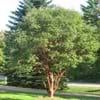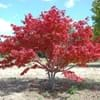Life Span
Perennial
Biennial and Perennial
Origin
Australia
Europe, Western Asia
Types
Not Available
Not Available
Habitat
Scrubs, tussock grasslands, Upland savannas
waste ground, wastelands
USDA Hardiness Zone
10-11
4-9
Sunset Zone
8, 9, 12, 13, 14, 15, 16, 17, 18, 19, 20, 21, 22, 23, 24
A1, A2, A3, H1, H2, 1a, 1b, 2a, 2b, 3a, 3b, 4, 5, 6, 7, 8, 9, 10, 11, 12, 13, 14, 15, 16, 17, 18, 19, 20, 21, 22, 23, 24
Habit
Upright/Erect
Rosette/Stemless
Flower Color
Lemon yellow
Yellow
Flower Color Modifier
Bicolor
Bicolor
Fruit Color
Gray Green
Brown, Black
Leaf Color in Spring
Blue Green
Green
Leaf Color in Summer
Blue Green
Green
Leaf Color in Fall
Blue Green
Green
Leaf Color in Winter
Blue Green
Not Available
Leaf Shape
Long Narrow
Pinnate
Plant Season
Spring
Summer
Sunlight
Full Sun
Full Sun
Type of Soil
Loam, Sand
Loam
The pH of Soil
Acidic, Neutral, Alkaline
Neutral
Soil Drainage
Well drained
Well drained
Bloom Time
Spring, Late Winter
Summer
Tolerances
Drought
Drought
Where to Plant?
Ground
Ground, Pot
How to Plant?
Seedlings
Seedlings
Plant Maintenance
Medium
Medium
Watering Requirements
Do not water excessively
Average Water Needs, Do Not over Water, Keep the ground moist but not water-logged
In Summer
Lots of watering
Lots of watering
In Spring
Moderate
Moderate
In Winter
Average Water
Average Water
Soil pH
Acidic, Neutral, Alkaline
Neutral
Soil Type
Loam, Sand
Loam
Soil Drainage Capacity
Well drained
Well drained
Sun Exposure
Full Sun
Full Sun
Pruning
Remove dead or diseased plant parts, Requires little pruning
Remove damaged leaves, Remove dead branches, Remove dead leaves
Fertilizers
All-Purpose Liquid Fertilizer, No fertilizers needed
All-Purpose Liquid Fertilizer
Pests and Diseases
Insects, Root rot
Aphids, Armyworm, Cutworms, Downy mildew, Pitch canker, Red blotch
Plant Tolerance
Drought
Drought
Flower Petal Number
Single
Not Available
Fragrant Bark/Stem
No
Yes
Foliage Texture
Fine
Fine
Foliage Sheen
Matte
Matte
Attracts
Butterflies
Butterflies
Allergy
Asthma, Eye irritation, Headache, Nose Irritation, Throat itching, Vomiting
Stomach burn
Aesthetic Uses
Showy Purposes
Not Available
Beauty Benefits
Not Available
Blood purifying, Good for skin
Environmental Uses
Air purification, soil stabilisation
Air purification
Medicinal Uses
Not Available
Aphrodisiac
Part of Plant Used
Flowers, Sap, Seeds
Root
Other Uses
Used as a dye, Wood is used fore making tools
Food for animals, Used as a nutritious food item
Used As Indoor Plant
No
Yes
Used As Outdoor Plant
Yes
Yes
Garden Design
Shade Trees, Street Trees
Edible, Herb, Vegetable
Botanical Name
ACACIA aneura
PASTINACA sativa
Common Name
Mulga, True Mulga
Parsnip
In German
Mulga
Pastinake
In Spanish
Mulga
Chirivía
In Greek
mulga
Είδος δαυκίου
In Portuguese
Mulga
cherivia
In Polish
Mulga
Pasternak
Phylum
Magnoliophyta
Magnoliophyta
Class
Magnoliopsida
Magnoliopsida
Clade
Angiosperms, Eudicots, Rosids
Angiosperms, Asterids, Eudicots
Tribe
Not Available
Not Available
Subfamily
Not Available
Not Available
Number of Species
Not Available
Not Available
Properties of Mulga Tree and Parsnip
Wondering what are the properties of Mulga Tree and Parsnip? We provide you with everything About Mulga Tree and Parsnip. Mulga Tree doesn't have thorns and Parsnip doesn't have thorns. Also Mulga Tree does not have fragrant flowers. Mulga Tree has allergic reactions like Asthma, Eye irritation, Headache, Nose Irritation, Throat itching and Vomiting and Parsnip has allergic reactions like Asthma, Eye irritation, Headache, Nose Irritation, Throat itching and Vomiting. Compare all the properties and characteristics of these two plants. Find out which of these plant can be used as indoor plant. If you are interested to decorate your house and garden, find out aesthetic uses, compare them and select the plant which will beautify your surrounding. Along with beautification, try comparing medicinal and edible uses of Mulga Tree and Parsnip and you can choose the plant having best and most benefits.
Season and Care of Mulga Tree and Parsnip
Season and care of Mulga Tree and Parsnip is important to know. While considering everything about Mulga Tree and Parsnip Care, growing season is an essential factor. Mulga Tree season is Spring and Parsnip season is Spring. The type of soil for Mulga Tree is Loam, Sand and for Parsnip is Loam while the PH of soil for Mulga Tree is Acidic, Neutral, Alkaline and for Parsnip is Neutral.
Mulga Tree and Parsnip Physical Information
Mulga Tree and Parsnip physical information is very important for comparison. Mulga Tree height is 550.00 cm and width 370.00 cm whereas Parsnip height is 15.20 cm and width 7.60 cm. The color specification of Mulga Tree and Parsnip are as follows:
Mulga Tree flower color: Lemon yellow
Mulga Tree leaf color: Blue Green
Parsnip flower color: Yellow
- Parsnip leaf color: Green
Care of Mulga Tree and Parsnip
Care of Mulga Tree and Parsnip include pruning, fertilizers, watering etc. Mulga Tree pruning is done Remove dead or diseased plant parts and Requires little pruning and Parsnip pruning is done Remove damaged leaves, Remove dead branches and Remove dead leaves. In summer Mulga Tree needs Lots of watering and in winter, it needs Average Water. Whereas, in summer Parsnip needs Lots of watering and in winter, it needs Average Water.





